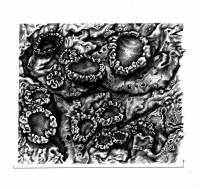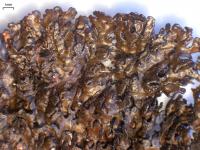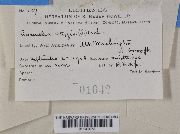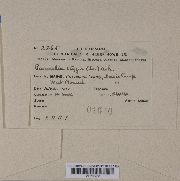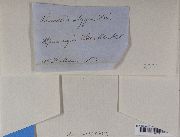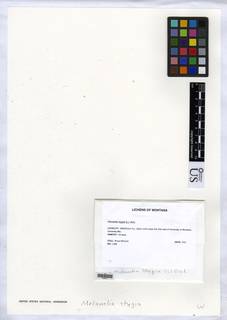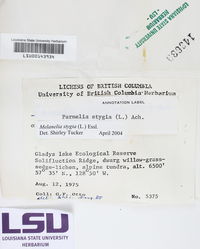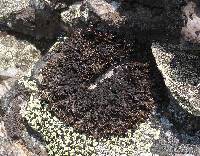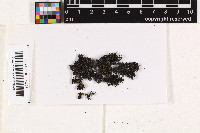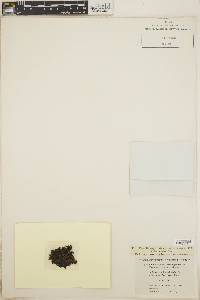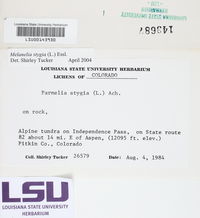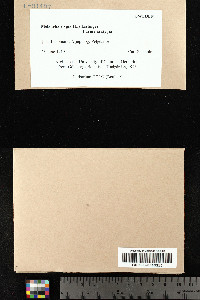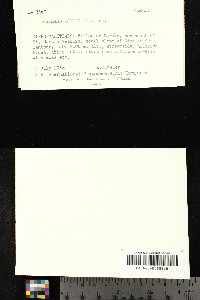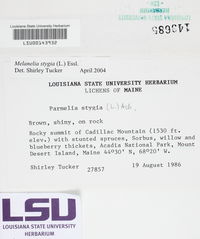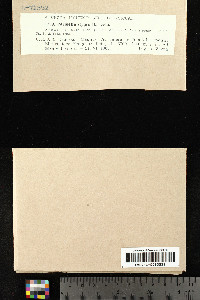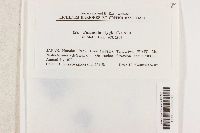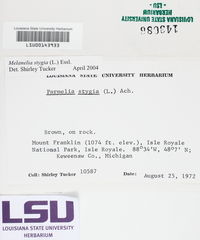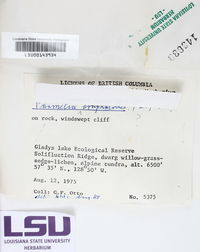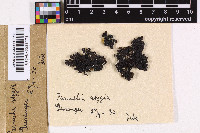
Consortium of Lichen Herbaria
- building a Global Consortium of Bryophytes and Lichens as keystones of cryptobiotic communities -
- Home
- Search
- Images
- Species Checklists
- US States: O-Z >
- US National Parks
- Central America
- South America
- US National Parks
- Southern Subpolar Region
|
|
|
|
Family: Parmeliaceae
Alpine Camouflage Lichen
[Cetraria stygia (L.) Schaer., moreCornicularia stygia (L.) Nyl., Imbricaria stygia (L.) DC., Imbricaria stygia f. conturbata Arnold, Imbricaria stygia f. stygia (L.) DC., Lichen stygius L., Lobaria stygia (L.) Hoffm., Parmelia stygia (L.) Ach., Parmelia stygia f. lignicola Kosk.{?}, Parmelia stygia f. stygia (L.) Ach., Parmelia stygia var. elveloidea Schaer., Parmelia stygia var. orbicularis Schaer., Parmelia stygia var. pulvinata Schaer., Parmelia stygia var. reagens Servít, Parmelia stygia var. septentrionalis Lynge, Parmelia stygia var. stygia (L.) Ach., Squamaria stygia (L.) Hoffm.] |
Life habit: lichenized (mutualistic with algal photobionts) thallus: foliose (foliaceous), leaf-like thallus: continuous, diffuse, effuse [th] upper surface: black(ish) | black(ish) brown | grey(ish) brown | green(ish) brown (olive brown) [th upper surface]: epruinose | pruinose [th marginal and upper surface] specific structures: present [th margin] cilia, cilioid structures: absent [th upper surface] isidia, isidioid structures: absent [th upper surface] soredia, soralia, soralioid structures: present [th] morphol substructures (eg areoles, lobes, branches) width [mm]: (min) 0.2 (low) 0.5 (high) 1.5 (max) 3.0 [th] morphol substructures (eg areoles, squamules): distantly discontiguous [th] morphol substructures (eg areoles, lobes, branches) upper surface: smooth, plane | rugose, plicate, folded, pustulate, faveolate, wrinkled [th] morphol substructures (eg lobes, branches): subdichotomous | irregular [th] lower surface: black(ish) | brown(ish) (if pale: fawn, tan; if mid: cinnamon) [th lower surface] specific structures: present [th lower surface] rhizines, rhizoid structures: present [th lower surface] rhizines, rhizinoid structures: unbranched, simple ascomata: absent | present ascoma: apothecial, apothecioid hymenial ascoma [mm]: (low) 1.0 (high) 2.5 ascoma: sessile, superficial | subpedicellate, substipitate, subpedunculate, substalked [ascm, if apoth] disc, mazaedium: concave | plane, flat, flattened, expanded [ascm, if apoth] disc, mazaedium: brown(ish) (if pale: fawn, tan; if mid: cinnamon) [ascm, if apoth] disc, mazaedium: epruinose [ascm, if apoth] margin surface; [if perith] periostiolar area, ostiole, involucrellum: black(ish) | black(ish) brown | grey(ish) brown | green(ish) brown (olive brown) [ascm, if apoth] margin excipular photobionts: present | abundant [ascm, if apoth] subhymenial layers, hypothecium; [if perith] basal excipulum: hyaline, colourless [ascm] paraphyses/-oids: present [ascm] epihymenium, epithecium: brown(ish) (if pale: fawn, tan; if mid: cinnamon) asci: lecanoralean [asc] tholus: thickened [asc] tholus amyloidity (iodine reaction): present [asc] tholus amyloidity pattern: amyloid with widening axial body towards the apex (= Lecanora-, Parmelia-, Rinodina-types etc) ascospores: (median) 8.0 [asp] shape: ellipsoidal | ovoid, ovate [asp] length [µm]: (low) 9.0 (high) 11.0 [asp] width [µm]: (low) 4.5 (high) 6.0 [asp] septa: absent spore lumen unilocular, monolocular [asp] pigmentation: hyaline, colourless [asp] perispore, epispore: not apparent secondary metabolites: present secondary metabolites: perlatolic acid | stenosporic acid primary photobiont: present secondary photobionts (eg in cephalodia): absent primary photobiont: chlorophytaceous trebouxiaceous, chlorococcoid. substrate: bark, cork, plant surface trunks, branches, twigs | rock siliceous, siliciferous, acidic | rock, stones, pebbles unspecified. |
|
|
|
Powered by Symbiota











